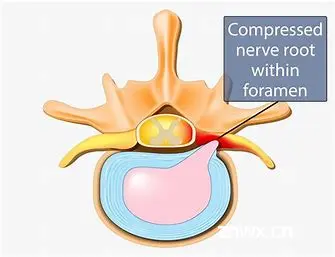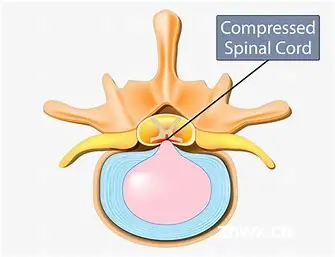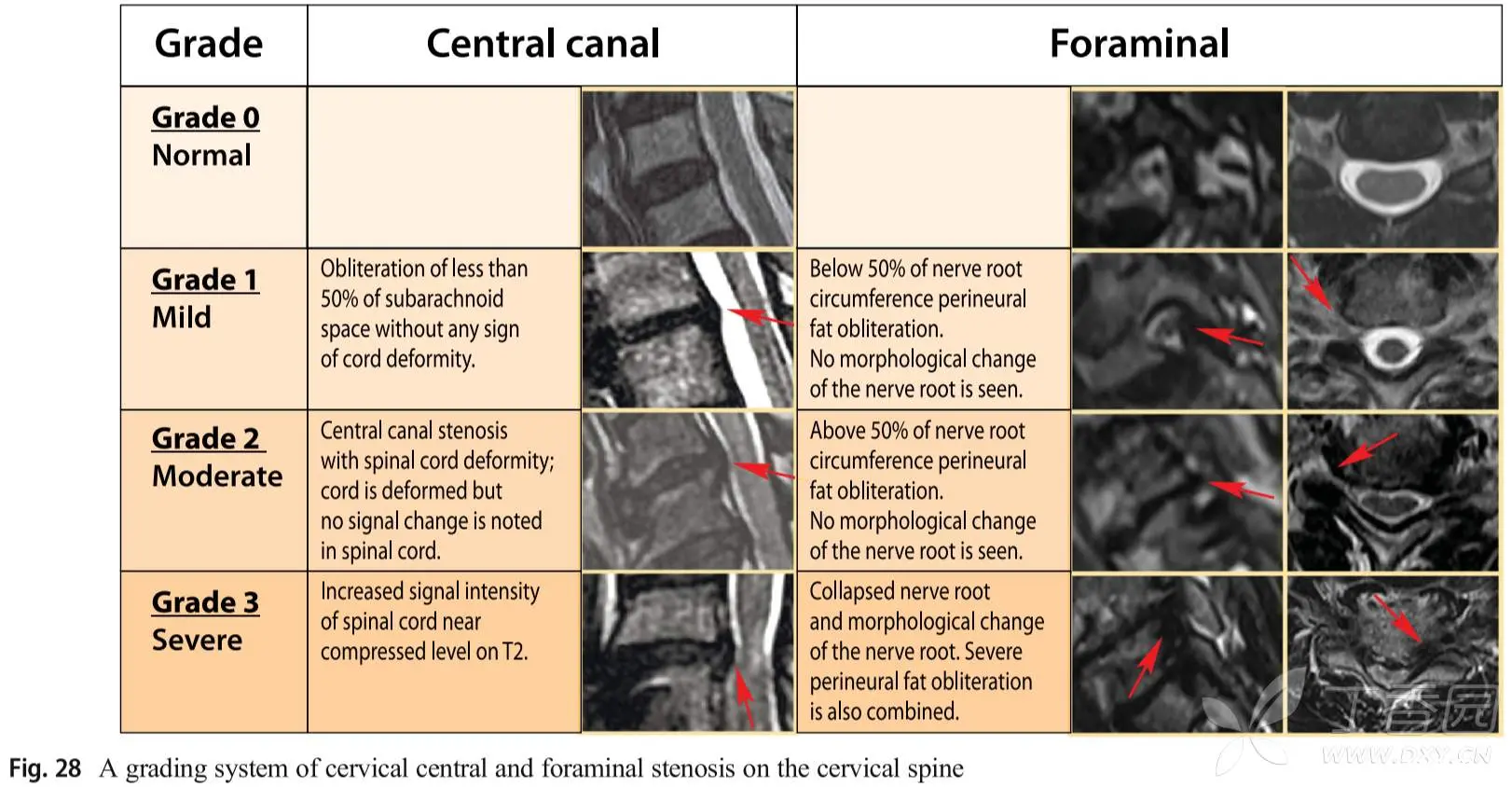【1】Kaggle赛题解读:RSNA 2024 Lumbar Spine Degenerative Classification
cnblogs 2024-08-19 08:13:00 阅读 99
赛题名称:RSNA 2024 Lumbar Spine Degenerative Classification
中文:腰椎退行性病变分类
kaggle官网赛题链接:https://www.kaggle.com/competitions/rsna-2024-lumbar-spine-degenerative-classification/overview
文章安排:
①、翻译&解释比赛赛题
②、介绍赛题背景
③、讨论可能的方法
赛题翻译
概述
The goal of this competition is to create models that can be used to aid in the detection and classification of degenerative spine conditions using lumbar spine MR images. Competitors will develop models that simulate a radiologist's performance in diagnosing spine conditions.
这次比赛的目标是创建可以帮助检测和分类退行性脊柱疾病的模型,使用的是腰椎的磁共振图像。参赛者将开发模拟放射科医生在诊断脊柱疾病时表现的模型。
描述
Low back pain is the leading cause of disability worldwide, according to the World Health Organization, affecting 619 million people in 2020. Most people experience low back pain at some point in their lives, with the frequency increasing with age. Pain and restricted mobility are often symptoms of spondylosis, a set of degenerative spine conditions including degeneration of intervertebral discs and subsequent narrowing of the spinal canal (spinal stenosis), subarticular recesses, or neural foramen with associated compression or irritations of the nerves in the low back.
根据世界卫生组织的统计,腰背痛是全球致残的主要原因,2020年影响了6.19亿人。大多数人一生中的某个时刻会经历腰背痛,且随着年龄的增长,发生频率会增加。疼痛和活动受限通常是脊柱病的症状,这是一组退行性脊柱疾病,包括椎间盘退化和随后的脊柱管(脊柱狭窄)、副关节窝或神经孔的狭窄,伴有神经压迫或刺激的情况。
Magnetic resonance imaging (MRI) provides a detailed view of the lumbar spine vertebra, discs and nerves, enabling radiologists to assess the presence and severity of these conditions. Proper diagnosis and grading of these conditions help guide treatment and potential surgery to help alleviate back pain and improve overall health and quality of life for patients.
磁共振成像(MRI)提供了腰椎椎体、椎间盘和神经的详细视图,使放射科医生能够评估这些病症的存在和严重程度。准确的诊断和分级有助于指导治疗和潜在的手术,以缓解背痛,并改善患者的整体健康和生活质量。
RSNA has teamed with the American Society of Neuroradiology (ASNR) to conduct this competition exploring whether artificial intelligence can be used to aid in the detection and classification of degenerative spine conditions using lumbar spine MR images.
RSNA与美国神经放射学学会(ASNR)合作开展了这一竞赛,探索人工智能是否可以帮助检测和分类退行性脊柱病症,使用的是腰椎MR图像。
The challenge will focus on the classification of five lumbar spine degenerative conditions: Left Neural Foraminal Narrowing, Right Neural Foraminal Narrowing, Left Subarticular Stenosis, Right Subarticular Stenosis, and Spinal Canal Stenosis. For each imaging study in the dataset, we’ve provided severity scores (Normal/Mild, Moderate, or Severe) for each of the five conditions across the intervertebral disc levels L1/L2, L2/L3, L3/L4, L4/L5, and L5/S1.
挑战将重点放在五种腰椎退行性疾病的分类上:左侧神经孔狭窄、右侧神经孔狭窄、左侧副关节狭窄、右侧副关节狭窄和脊柱管狭窄。对于数据集中每个影像研究,我们提供了五种病症的严重程度评分(正常/轻度、中度或重度),涵盖了椎间盘水平L1/L2、L2/L3、L3/L4、L4/L5和L5/S1。
To create the ground truth dataset, the RSNA challenge planning task force collected imaging data sourced from eight sites on five continents. This multi-institutional, expertly curated dataset promises to improve standardized classification of degenerative lumbar spine conditions and enable development of tools to automate accurate and rapid disease classification.
为了创建基础真相数据集,RSNA挑战规划工作组从五大洲的八个地点收集了影像数据。这一多机构、专家精心策划的数据集有望改善退行性腰椎疾病的标准化分类,并使自动化准确和快速的疾病分类工具的开发成为可能。
Challenge winners will be recognized at an event during the RSNA 2024 annual meeting. For more information on the challenge, contact RSNA Informatics staff at informatics@rsna.org.
挑战获胜者将在RSNA 2024年度会议期间的活动中获得表彰。有关挑战的更多信息,请联系RSNA信息学工作人员,电子邮件:informatics@rsna.org。
评价标准
Submissions are evaluated using the average of sample weighted log losses and an any_severe_spinal prediction generated by the metric. The metric notebook can be found here.
提交内容将使用样本加权对数损失的平均值和由度量生成的 any_severe_spinal 预测来进行评估。度量笔记本可以在这里找到。
The sample weights are as follows:
1 for normal/mild.
2 for moderate.
4 for severe.
For each row ID in the test set, you must predict a probability for each of the different severity levels.
The file should contain a header and have the following format:
样本权重如下:
1 代表正常/轻度。
2 代表中度。
4 代表重度。
对于测试集中的每个行 ID,您必须预测每个不同严重程度级别的概率。文件应包含一个标题,并具有以下格式:
row_id,normal_mild,moderate,severe
123456_left_neural_foraminal_narrowing_l1_l2,0.333,0.333,0.333
123456_left_neural_foraminal_narrowing_l2_l3,0.333,0.333,0.333
123456_left_neural_foraminal_narrowing_l3_l4,0.333,0.333,0.333
etc.
In rare cases the lowest vertebrae aren't visible in the imagery. You still need to make predictions (nulls will cause errors), but those rows will not be scored.
在极少数情况下,影像中可能看不到最低椎骨。您仍然需要进行预测(空值会导致错误),但这些行将不会被评分。
在本次比赛中,任何严重标量已设定为 1.0。
医学术语介绍
病变分类
腰椎退行病变可以分为三类:椎管狭窄、锥间孔狭窄、神经根管狭窄三类。其中椎间孔狭窄和神经根管狭窄有左右两侧的区分(即共有五类)。
spinal canal stenosis 椎管狭窄
脊髓管(椎管)是由椎体骨、韧带和脊椎关节形成的管道,里面包含脊髓和神经根。椎管狭窄指的是整个脊髓管的空间变窄。
subarticular stenosis椎间孔狭窄
椎间孔是位于相邻脊椎骨之间的开口,通过这个开口,神经根从脊髓出来。椎间孔狭窄是指这个开口的空间变窄。
neural foraminal narrowing 神经根管狭窄
神经根管指的是椎间孔内的通道,允许神经根从脊髓出来并进入身体其他部位。神经根管狭窄是指这个特定通道的变窄。
图例
下面给出两个椎间盘病变的病例示意图(椎间盘:蓝色为纤维环,红色为髓核)
该图椎间盘病变压迫了椎间孔,可能导致椎间孔狭窄或神经根管狭窄。

该图压迫了椎管,导致椎管狭窄。

解释
椎间孔狭窄和神经根管狭窄存在逻辑关系。
椎间孔狭窄指空间变窄,注意椎间孔的主要功能是提供神经根离开脊髓管的通道,但不是唯一功能。
神经根管狭窄具体强调神经的通路变窄。
简单来说,前者强调解剖空间,后者强调神经通路。
椎间孔狭窄是导致神经根管狭窄的重要直接原因之一。
除此之外,还可能因为椎间盘膨出、韧带肥厚、肌肉或软组织压迫等导致神经根管狭窄。
病变程度分级
神经根管狭窄病变程度分级
- <li>
等级1(轻度):在一个维度上(垂直或水平)无法看到神经周围的脂肪
由黄韧带增厚/弯曲引起的前后径变窄
由椎间盘和/或骨刺侵入或椎间盘高度丧失引起的上下径变窄
等级2(中度):无法在圆周方向上看到神经周围的脂肪,但神经根未受到压迫
由于退行性面关节肥大、黄韧带增厚/弯曲、椎间盘和/或骨刺侵入以及/或者椎间盘高度丧失引起的多方向侵入
等级3(重度):无法看到神经周围的脂肪,且神经根受到压迫(形态改变)
等级0(正常):脂肪环绕在神经根周围
椎管狭窄、椎间孔狭窄

central canal (椎管)
- <li>轻度:蛛网膜下腔梗阻小于50%,无脊髓畸形迹象。
- 中度:椎管管狭窄伴随脊髓畸形;脊髓变形,但脊髓内未见信号改变。
- 重度:T2上脊髓受压区域附近信号强度增高
Foraminal (椎间孔)
- 轻度:50%以下神经根周围脂肪闭塞。未见神经根形态学改变。
- 中度:50%以上神经根周围脂肪闭塞。未见神经根形态学改变。
- 重度:神经根塌陷以及神经根形态学改变。严重的神经周围脂肪闭塞。
参考资料
参考链接:
https://radiopaedia.org/articles/lumbar-foraminal-stenosis
参考文献:
Kushchayev SV, Glushko T, Jarraya M, Schuleri KH, Preul MC, Brooks ML, Teytelboym OM. ABCs of the degenerative spine. Insights Imaging. 2018 Apr;9(2):253-274. doi: 10.1007/s13244-017-0584-z. Epub 2018 Mar 22. PMID: 29569215; PMCID: PMC5893484.
下篇预告:
将讲述如何打开dcm文件,以及如何用python读取文件并将其转为网络可以识别的格式。
声明
本文内容仅代表作者观点,或转载于其他网站,本站不以此文作为商业用途
如有涉及侵权,请联系本站进行删除
转载本站原创文章,请注明来源及作者。